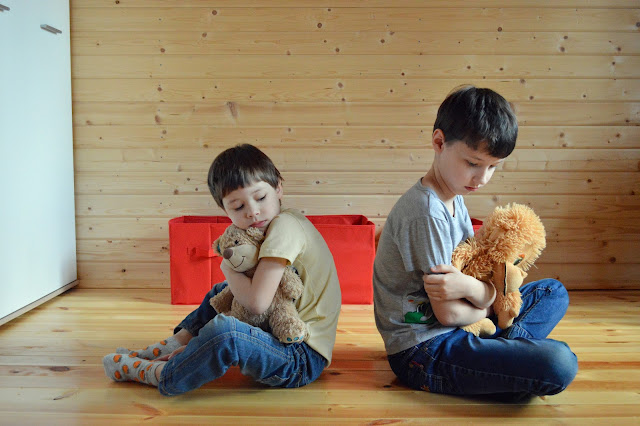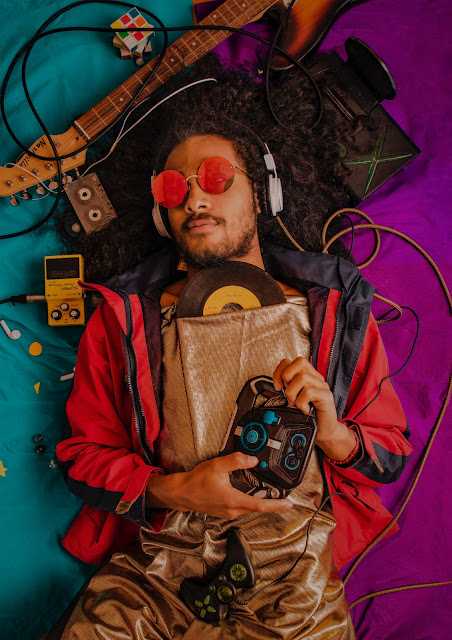The color Psychology : How do colors affect our life
Color is a powerful tool that can evoke emotions, influence perception, and shape behavior. Whether we realize it or not, colorings have a profound impact on our mood and the manner we interact with the arena around us. This field observation, known as coloration psychology, explores the psychological and emotional effects that distinctive colorings could have on people.
 |
| Color pencils |
The basic of color Psychology
To recognize shade psychology, it's miles important to first hold close the fundamental Colors that may be divided into heat and funky categories. Colors like red, orange, and yellow are often related to plenty of strength, robust feelings, and feeling thrill. On the opposite hand, cool sunglasses like blue, inexperienced, and red generally tend to evoke emotions of calmness, rest, and tranquility.
Additionally, hues may be further analyzed based on their depth and saturation. Bright and vibrant colors are often linked to high energy levels and stimulation, while muted or pastel colors are more soothing and gentle
How Colors Impact Your Mood and Behavior
 |
| Two kids |
Colors have the electricity to persuade our mood and conduct in diverse methods. For instance, red has been shown to increase coronary heart price and blood stress, evoking emotions of exhilaration and urgency. This is why it's miles often utilized in commercials to grab attention and create a sense of urgency Blue, then again, has a claiming effect and is related to emotions of accepting as true with and protection. It is typically used in healthcare settings to create a sense of tranquility and relaxation.
Yellow has been proven to increase brain pastime and creativity. It can enhance focus and concentration, making it an ideal color for a workspace or areas where brainstorming takes place.
The psychology of Black Color and Its meaning
 |
| A girl |
The color black is often thought of as powerful, classy, and proper, it might elicit a sentiment of power and authority. It can be connected with negativity and gloom. In color psychology, black is often used to convey a sense of mystery or secrecy.
The Psychology of gray Color and its meaning
 |
| A stone |
Gray is a neutral color that is often associated with practicality and balance. It can elicit sensations of peace and steadiness. Gray is often interior design to create a sense of sophistication and elegance. However, excessive use of gray can sometimes be perceived as dull or uninteresting
Other colors and their psychological effects
In addition to black and gray, other colors have unique psychological effects. For example, green is associated with nature and growth, and is often used to create a sense of harmony and balance. Orange is known to stimulate appetite and can used to create a sense of excitement or enthusiasm. Pink is often associated with feminity and can evoke feelings of hurting and compassion.
Applying Color Psychology in Marketing and Branding
Color is extremely important in branding and marketing. Companies
carefully select colors that align with their identity and evoke the desired
emotional response from their target audience. For example, fast-food chains
often use red and Yellow to create a sense of urgency and hunger, while luxury
brands many use gold or silver to convey a sense of exclusivity and
sophistication
Understanding color psychology can help businesses create impactful marketing campaigns and establish a strong brand identity that resonates with their target market.
Using Color Psychology in Interior Design
 |
| Furniture |
Color psychology is also widely used in interior design. Different colors can create different moods and atmospheres within a space. For example. Using warm colors like red or orange in a dining area can Stimulate appetite and create a lively atmosphere. On the other hand, cool colors like blue or green in a bedroom can promote relaxation and tranquility.
When designing a space, it's important to consider the intent purpose, and desired mood and select colors accordingly. By harnessing the power of shade psychology, interior designers can create space that no longer appears aesthetically appealing but also enhances the occupants' nicely-being and mood.
Color Psychology in Fashion and Personal Style
 |
| A Stylish Man |
Color psychology also plays a significant role in the world of fashion and personal style. Each color can send different messages and cause different feelings. For example, sporting crimson can make a person seem confident and powerful while sporting blue can create a feeling of trustworthiness and reliability.
Understanding how hues can affect perceptions can assist people in making conscious picks approximately the color they put on and the way they need to be perceived by using others. It may also be a tool for self-expression and showcasing personality through style.
Color psychology is a fascinating field of study that delves into the emotional and psychological effects that colors have on individuals. By knowledge of how colorations can impact mood and behavior, we can harness this understanding to create extra impactful advertising campaigns, design spaces that beautify nicely-being, and make conscious selections approximately the coloration we wear.






